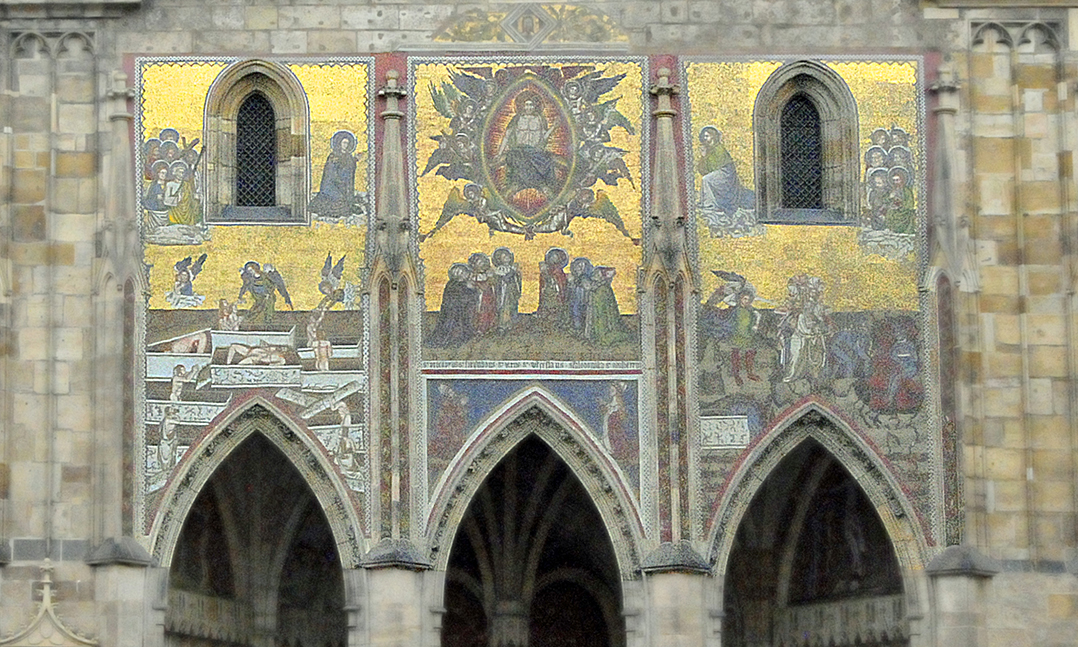The St. Vitus Cathedral in Prague, Czech Republic, features one of the world’s most important exterior mosaics, graphically illustrating the medieval conception of the Last Judgment.
In 1344, Bohemian King John the Blind laid the cornerstone for a cathedral on the site of two earlier Prague churches dedicated to St. Vitus. When John died in battle in 1346, his son, Charles IV, succeeded him. King Charles, determined to make the cathedral the most important in Europe, engaged a noted French architect to design a massive cathedral in the French Gothic style. In 1370, after the 407-foot by 197-foot structure had been enclosed, Charles commissioned mosaics above the three arched portals of the south entrance, intended to provide those approaching the cathedral a powerful reason to go inside. The mosaics, completed in 1371 and encompassing about 1,000 square feet, incorporated approximately 1 million pieces of colored glass and gold leaf. The middle panel portrays Jesus at the end of time, executing the Last Judgment. On Jesus’ right, the resurrected bodies of the righteous dead are climbing from their hillside tombs, assisted by angels. On Jesus’ left, the damned are being driven into the fires of hell. Perhaps only coincidentally, the gilded south entrance became known as the “Golden Gate,” the name of the gate through which Jewish tradition expects the Messiah to enter the Temple in Jerusalem after resurrecting the dead on the nearby Mount of Olives.
In the 15th century, wars and a shortage of funds halted work on the half-finished St. Vitus Cathedral. Construction resumed in the 19th century. When the cathedral was finally dedicated in 1929, the brilliant colors and gold of the Last Judgment mosaics had been obscured by potassium leaching from the medieval glass. Between 1992 and 2000, the mosaics were restored to their original splendor by the Getty Conservation Institute.



